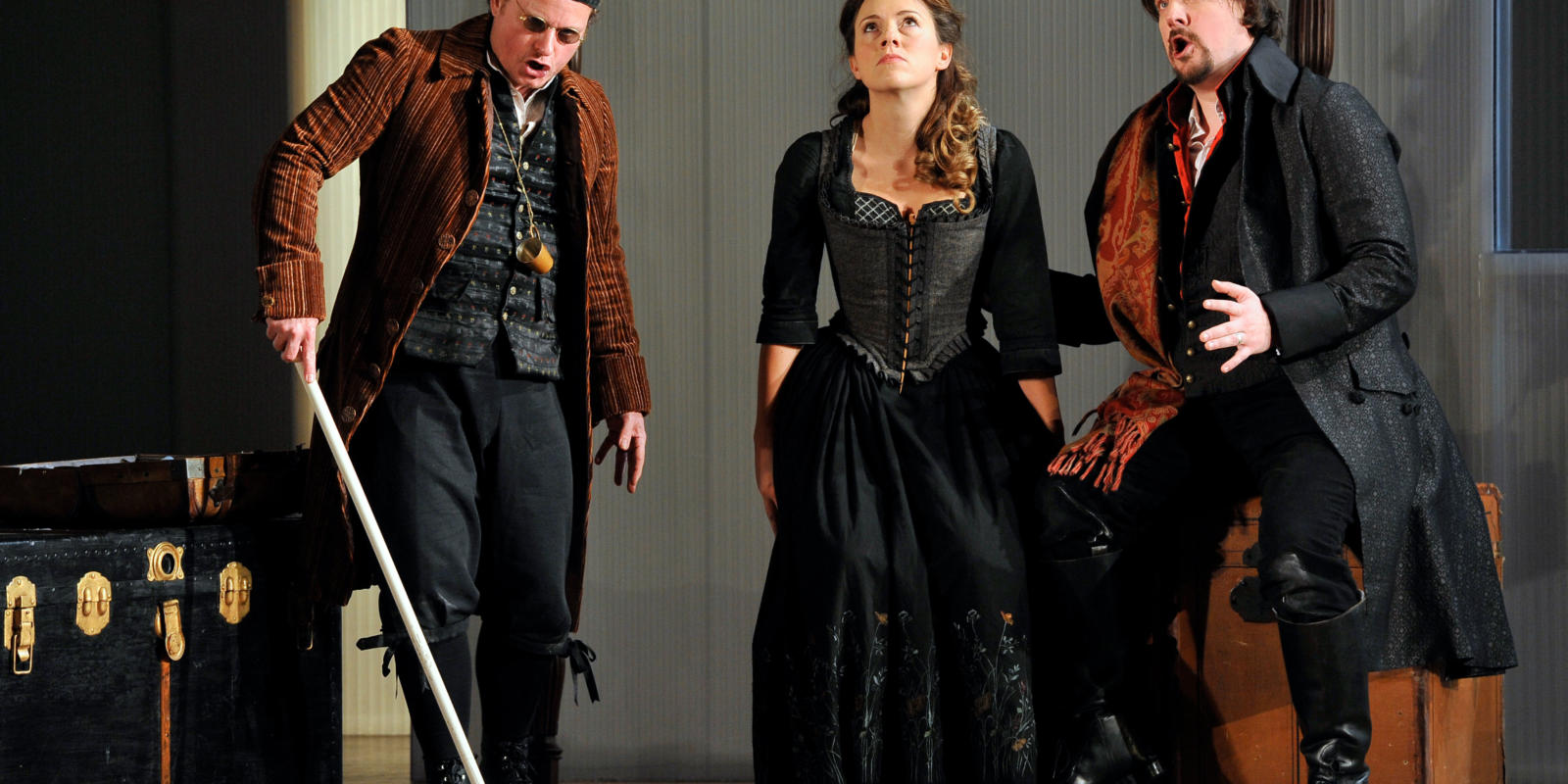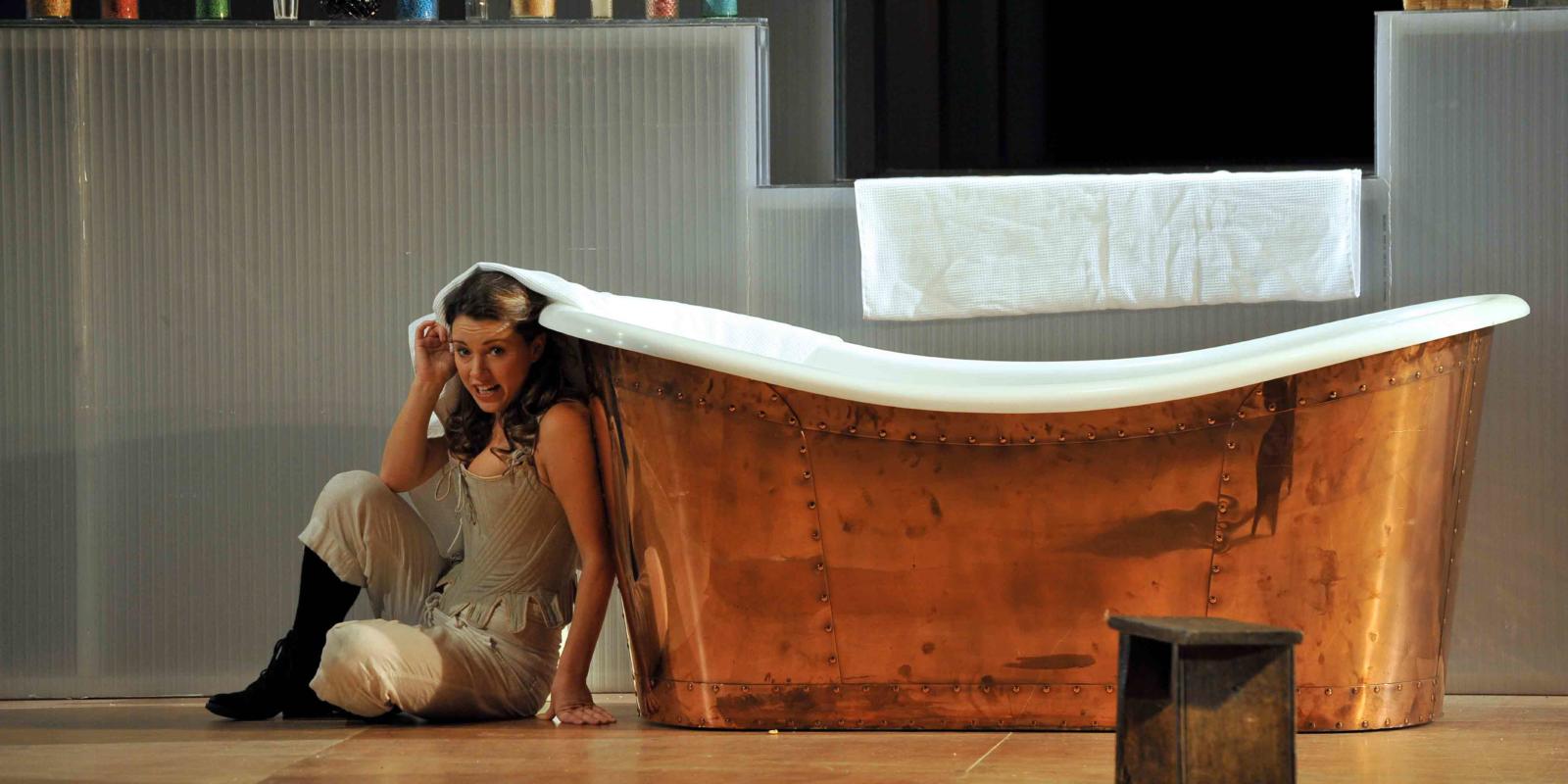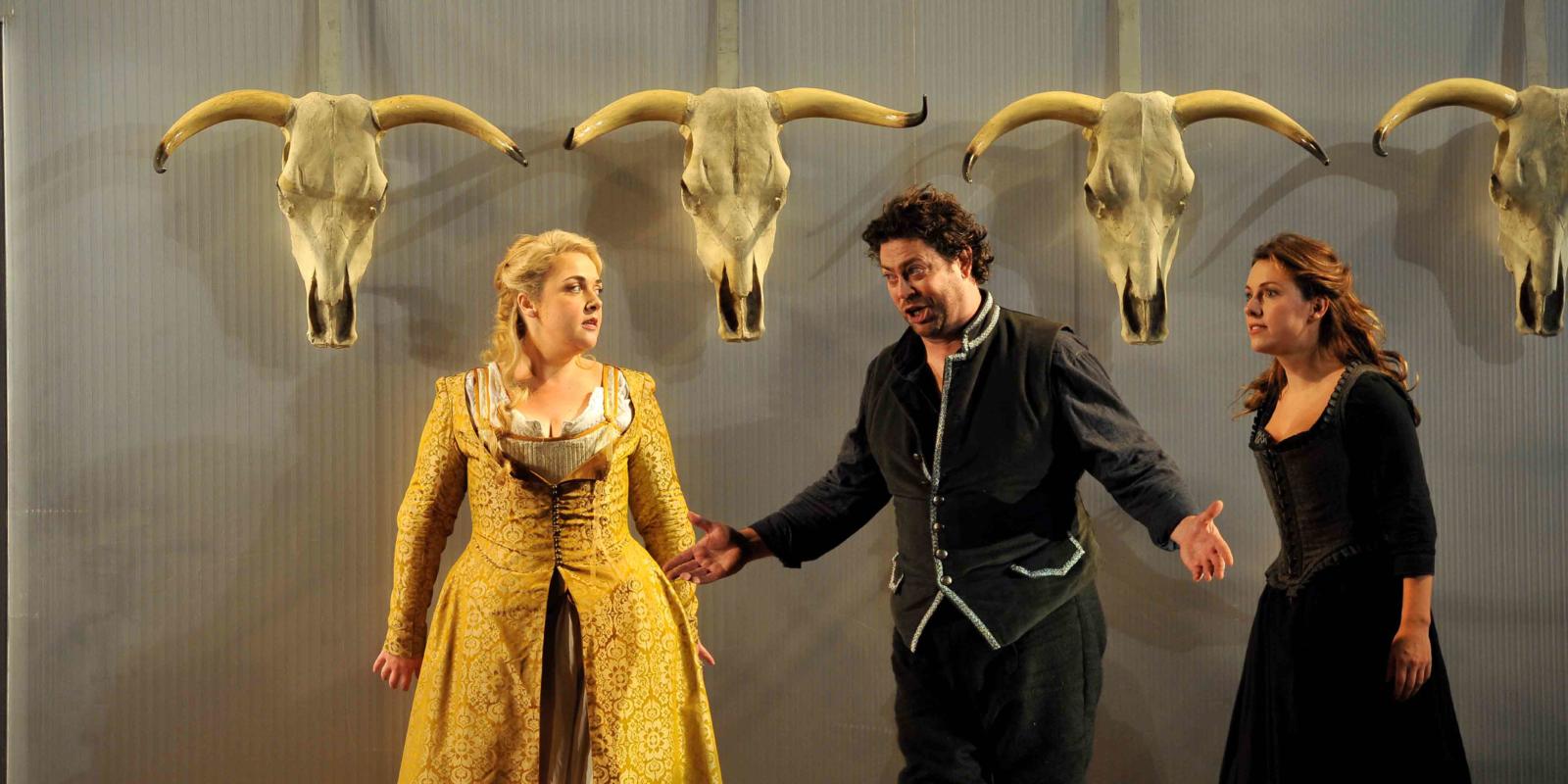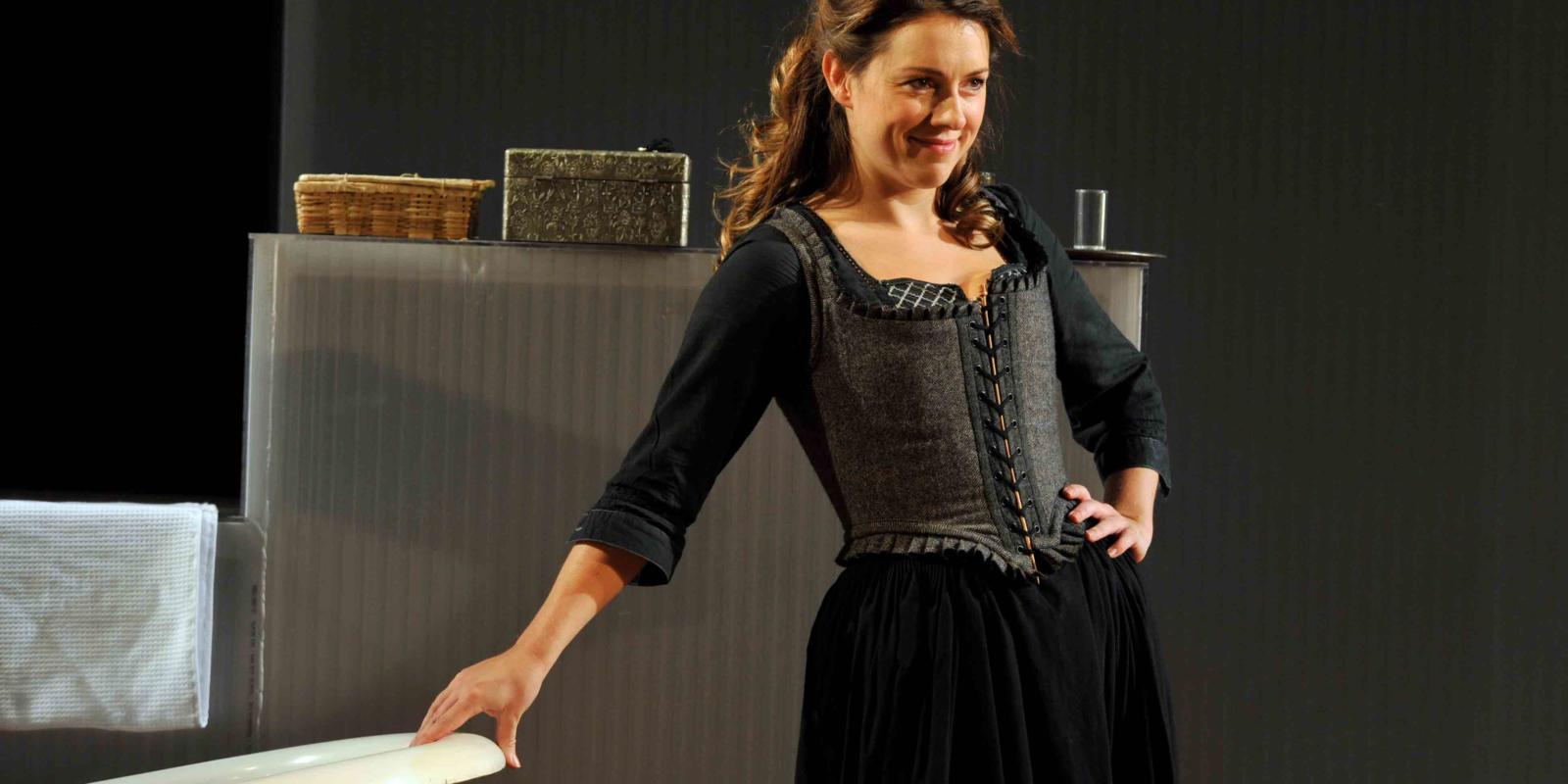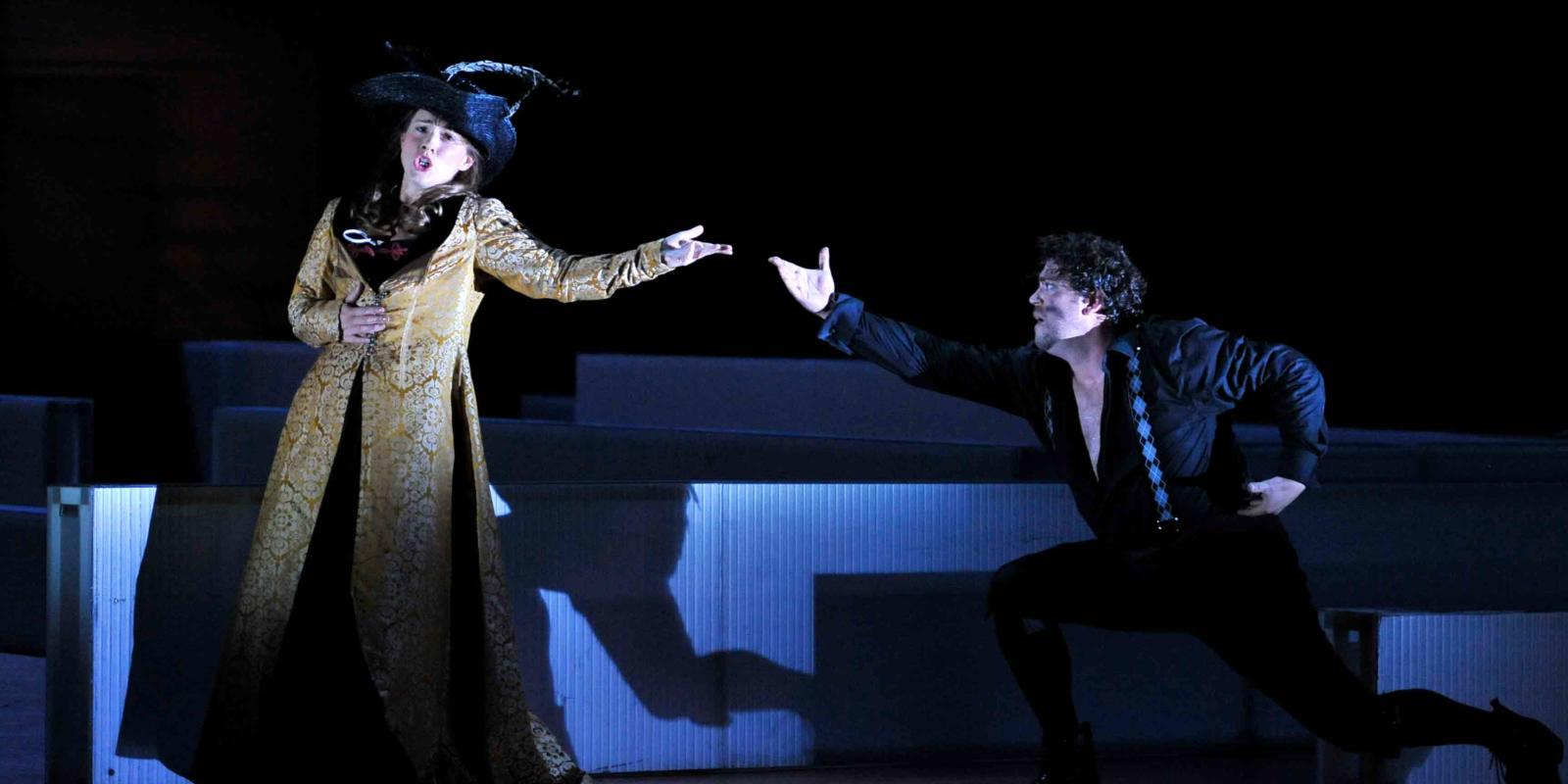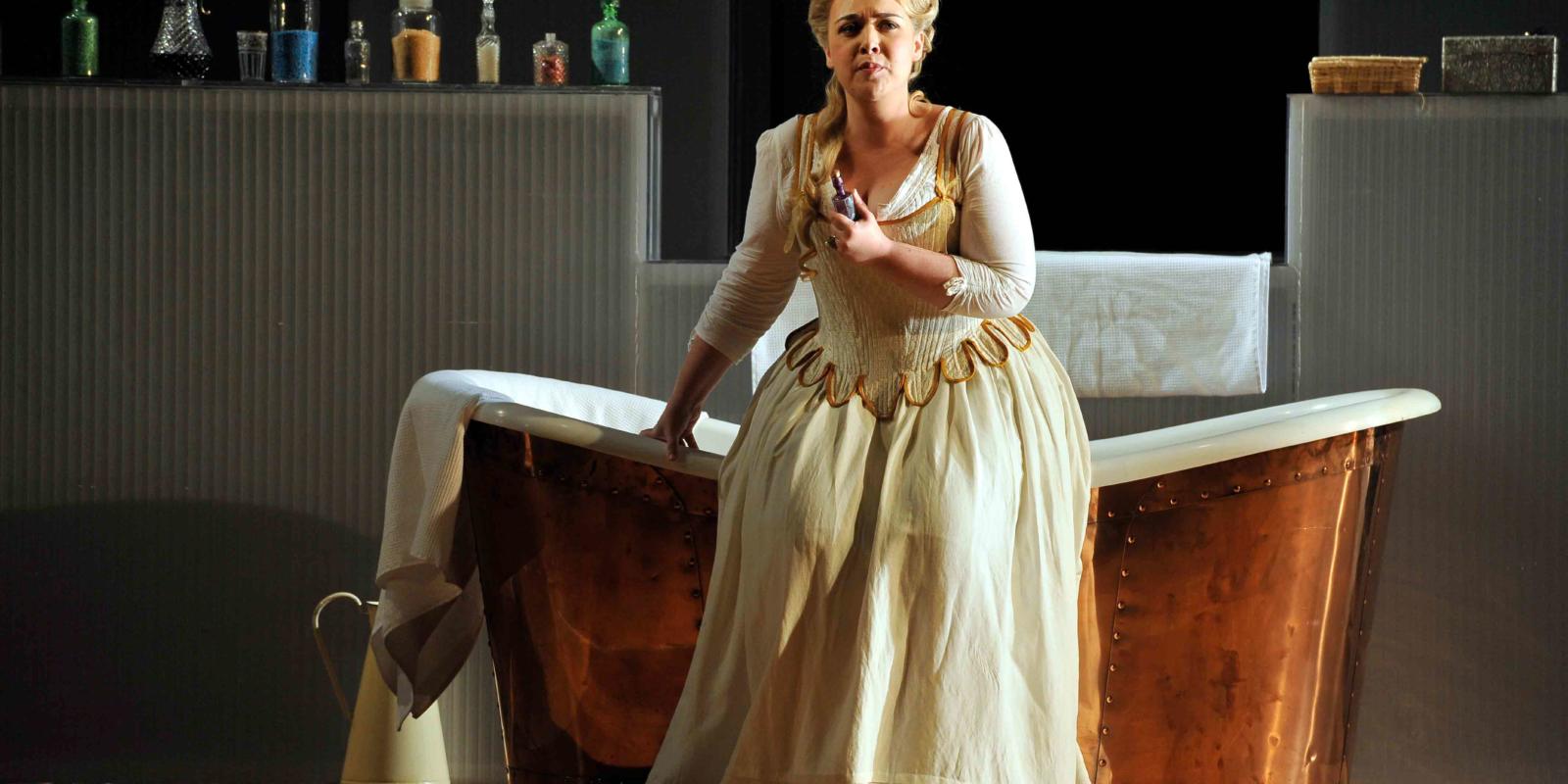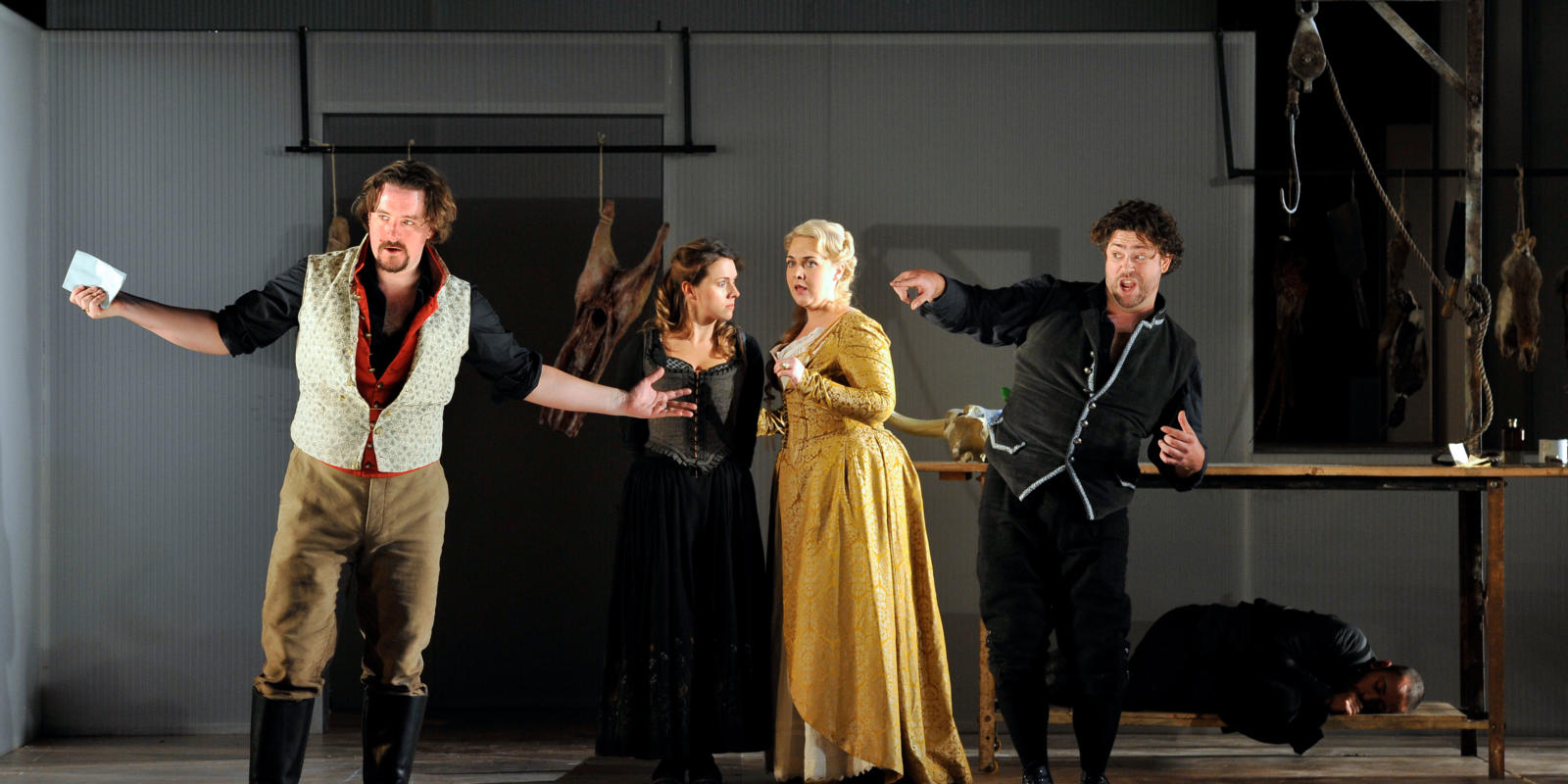The Production
“I certainly don’t want the production to hide behind the 18th century. You have to climb forward and deal with your own time. Theatre must always make things present to the viewer, but at the same time it must acknowledge where it has come from.”
Fiona Shaw on The Marriage of Figaro as quoted in The Independent
FS: My job is to try and get the singers to be true to our generation as we watch Figaro. The relationships should be recognisable. I thought about placing the opera in a modern context. This was my instinct because Da Ponte and Mozart were trying to strike a modern discord in their moment. But you cannot be modern with an opera that is fundamentally based on the right of the lord to sleep with his servant– the droit de seigneur. This stopped after the French Revolution. So one has to make an onstage context: men and women have to be trapped in houses run by men who have this right. To show this, we chose to make the setting both a house and a maze, and in the middle of the maze lives the Minotaur, who is the Count. Whenever the maze turns you see the back corridors, which the servants inhabit. There is a parallel universe going on all the time. We also have staircases either side that lead nowhere. I’ve always felt that the brain looks like a maze: our minds are both unlimited and yet always knocking against the passages of our own limitations.
Photo Gallery


